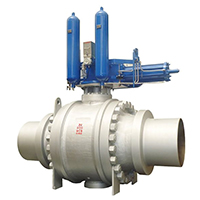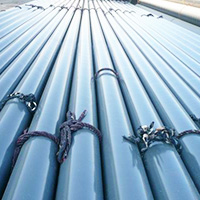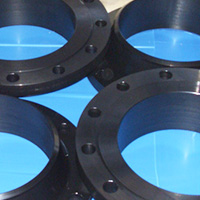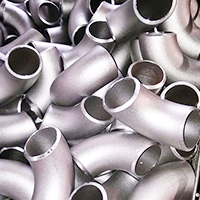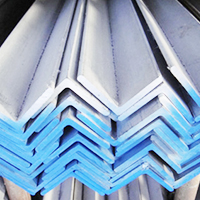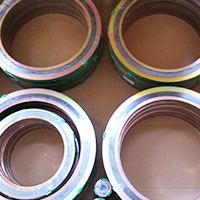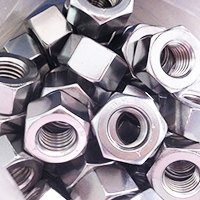The eight essential technical factors involved in the procurement of valves. The practice of only specifying specifications, categories, and working pressure when purchasing valves to meet procurement requirements is not perfect in the current market economy environment. Because valve manufacturers, in order to compete for their products, carry out different innovations under the concept of unified valve design, forming their own enterprise standards and product personalities. Therefore, it is necessary to provide detailed technical requirements and coordinate with the manufacturer to reach a consensus during valve procurement, as an attachment to the valve procurement contract.
1.General requirements
1.1 Valve specifications and categories should comply with the requirements of pipeline design documents
1.2 The model of the valve should indicate the national standard number requirements based on. If it is an enterprise standard, the relevant description of the model should be indicated
1.3 The working pressure of the valve is required to be ≥ the working pressure of the pipeline. Without affecting the price, the working pressure that the valve can withstand should be greater than the actual working pressure of the pipeline;
Either side of the valve should be able to withstand the closed condition
1.1 times the valve working pressure value without leakage; When the valve is open, the valve body should be able to withstand twice the valve working pressure.
1.4 The valve manufacturing standard should specify the national standard number based on, and if it is an enterprise standard, the procurement contract should be accompanied by the enterprise document.
2.Valve standard quality
2.1 The material of the valve body should be mainly nodular cast iron, and the brand and actual physical and chemical testing data of the cast iron should be indicated
2.2 The material of the valve stem should be stainless steel (2CR13), and large diameter valves should also have stainless steel embedded valve stems
2.3 Nut material, made of cast aluminum brass or cast aluminum bronze, with hardness and strength greater than the valve stem.
2.5 Sealing surface material:
① Valve types vary, and sealing methods and material requirements vary;
② The material, fixing method, and grinding method of copper rings for ordinary wedge gate valves should be specified;
③ Physical, chemical, and hygiene testing data of soft sealing gate valves and valve plate lining materials;
④ Butterfly valves should indicate the material of the sealing surface on the valve body and the material of the sealing surface on the butterfly plate; Their physical and chemical test data, especially the sanitary requirements, anti-aging performance and wear resistance of rubber; Usually, nitrile rubber and EPDM rubber are used, and the use of recycled rubber is strictly prohibited.
2.6 Valve Shaft Packing
① Due to the infrequent opening and closing of valves in the pipeline network, it is required that the packing should not be active for several years, and the packing should not age to maintain the sealing effect for a long time;
② The valve shaft packing should also withstand frequent opening and closing to ensure good sealing effect;
③ In view of the above requirements, the valve shaft packing should strive not to be replaced for life or more than ten years;
④ If the packing needs to be replaced, the valve design should consider measures to replace it under water pressure
3.Variable speed transmission box:
3.1 The material and internal and external anti-corrosion requirements of the box body are consistent with the principle of the valve body
3.2 The box should have sealing measures, and after assembly, the box can withstand immersion in a water column of 3 meters
The adjusting nut of the opening and closing limit device on the box should be inside or outside the box, but special tools are required for operation
3.4 The transmission structure is designed reasonably, and can only drive the valve shaft to rotate during opening and closing, without causing it to move up and down. The transmission components are moderately engaged, and there is no separation or slipping during loaded opening and closing
3.5 The transmission case and valve shaft seal cannot be connected as a leak free whole, otherwise reliable anti leakage measures should be taken
3.6 There should be no debris inside the box, and the gear engagement area should be protected by lubricating grease.
4.Valve operating mechanism.
4.1 During valve operation, the opening and closing direction should always be clockwise
4.2 Due to the frequent manual opening and closing of valves in the pipeline network, the number of opening and closing revolutions should not be too high, even for large diameter valves, it should be within 200 to 600 revolutions
4.3 For the convenience of one person's opening and closing operation, the maximum opening and closing torque should be 240N-m under pipeline pressure conditions
4.4 The valve opening and closing operating end should be square tenon, standardized in size, and facing the ground, so that people can operate directly from the ground. Valves with wheels are not suitable for underground pipeline networks.
4.5 Display panel for valve opening and closing degree.
① The scale lines for the degree of valve opening and closing should be cast on the gearbox cover or the outer shell of the display panel after direction change, all facing the ground, and the scale lines should be brushed with fluorescent powder to show eye-catching;
② The material of the indicator dial needle can be made of stainless steel plate under good management, otherwise it is painted steel plate, and aluminum sheet should not be used for production;
③ The indicator dial needle is eye-catching and firmly fixed. Once the opening and closing adjustment is accurate, it should be locked with rivets.
4.6 If the valve is buried deep and the distance between the operating mechanism and display panel from the ground is ≥ 1.5m, an extension rod facility should be installed and firmly fixed to facilitate observation and operation from the ground. In other words, the valve opening and closing operation in the pipeline network should not be carried out in the well.
5.Performance testing of valves
5.1 When valves are manufactured in bulk, authoritative institutions should be entrusted to conduct the following performance tests:
① The opening and closing torque of the valve under working pressure;
② Under working pressure, the number of consecutive opening and closing times that can ensure the valve is tightly closed;
③ Detection of flow resistance coefficient of valves under pipeline water transmission conditions
5.2 Valves should undergo the following inspections before leaving the factory
① When the valve is open, the valve body should withstand an internal pressure test of twice the working pressure value of the valve;
② Under the closed condition of the valve, both sides bear
6. Internal and external anti-corrosion of valves
6.1 The inside and outside of the valve body (including the gearbox) should first be shot blasted for sand removal and rust removal, striving to electrostatic spray powder non-toxic epoxy resin with a thickness of over 0.3mm. When it is difficult to electrostatic spray non-toxic epoxy resin on oversized valves, similar non-toxic epoxy paint should also be brushed and sprayed。
6.2 The interior of the valve body and various parts of the valve plate require comprehensive anti-corrosion. On the one hand, immersion in water will not rust, and electrochemical corrosion will not occur between two metals; On the other hand, the smooth surface reduces the water resistance。
6.3 The hygiene requirements for anti-corrosion epoxy resin or paint inside the valve body should be tested by corresponding authoritative authorities. The chemical and physical properties should also meet relevant requirements。
7. Valve packaging and transportation
7.1 Lightweight blocking plates should be installed on both sides of the valve for sealing.
7.2 Medium and small diameter valves should be bundled with straw ropes and transported in containers as appropriate.
7.3 Large diameter valves also come with simple wooden frame solid packaging to prevent damage during transportation.
8. The factory manual for valves refers to equipment, and the following relevant data should be indicated in the factory manual: valve specifications; Model; Work pressure; Manufacturing standards; Valve body material; Valve stem material; Sealing material; Valve shaft packing material; Material of valve stem sleeve; Internal and external anti-corrosion materials; Operation start direction; Revolution; Opening and closing torque under working pressure; Name of the manufacturer; Factory date; Factory number; Weight; The aperture, number of holes, and center hole distance of the connecting flange plate; Indicate the overall control dimensions of length, width, and height in a graphical manner; Valve flow resistance coefficient; Effective opening and closing times; Data related to valve factory inspection and precautions for installation and maintenance Let me respond! The strength performance of a valve refers to its ability to withstand medium pressure. Valves are mechanical products that withstand internal pressure, and therefore must have sufficient strength and stiffness to ensure long-term use without rupture or deformation The sealing performance of a valve refers to the ability of each sealing part of the valve to prevent medium leakage, which is the most important technical performance indicator of the valve. There are three sealing parts of the valve: the contact between the opening and closing parts and the two sealing surfaces of the valve seat; The matching between the packing and the valve stem and packing box; The connection between the valve body and the valve cover. The previous leakage is called internal leakage, which is commonly referred to as not being tightly closed, and it will affect the ability of the valve to cut off the medium. For block valves, internal leakage is not allowed. The last two leaks are called external leakage, which means that the medium leaks from the inside of the valve to the outside of the valve. External leakage can cause material loss, pollute the environment, and even cause accidents in severe cases. For flammable, explosive, toxic, or radioactive media, external leakage is not allowed, Therefore, the valve must have reliable sealing performance Flowing medium, when the medium flows through the valve, there will be a pressure loss (i.e. the pressure difference before and after the valve), which means that the valve has a certain resistance to the flow of the medium. In order to overcome the resistance of the valve, the medium needs to consume a certain amount of energy. From the perspective of energy conservation, when designing and manufacturing the valve, To minimize the resistance of the valve to the flow medium as much as possible, the opening and closing force and torque refer to the force or torque that must be applied to open or close the valve. When closing the valve, it is necessary to form a certain sealing ratio between the opening and closing parts and the sealing surfaces of the valve seat. At the same time, it is necessary to overcome the friction between the valve stem and the packing, between the threads of the valve stem and the nut, at the support of the valve stem end, and other friction parts, Therefore, a certain closing force and closing torque must be applied. During the opening and closing process of a valve, the required opening and closing force and torque vary, with the maximum value being at the final moment of closure or the initial moment of opening. When designing and manufacturing a valve, efforts should be made to reduce its closing force and torque. The opening and closing speed is expressed as the time required for the valve to complete an opening or closing action.
Generally, there are no strict requirements for the opening and closing speed of valves, but some operating conditions have special requirements for the opening and closing speed. For example, some require quick opening or closing to prevent accidents, while others require slow closing to prevent water hammer. This should be considered when selecting valve types. Sensitivity and reliability refer to the sensitivity of the valve to changes in medium parameters and corresponding reactions. For throttle valves, pressure reducing valves For valves such as regulating valves used to regulate medium parameters, as well as valves with specific functions such as safety valves and drain valves, their functional sensitivity and reliability are very important technical performance indicators The service life represents the durability of the valve, is an important performance indicator of the valve, and has great economic significance. It is usually expressed in terms of the number of opening and closing times that can ensure sealing requirements, and can also be expressed in terms of service time The above are several main technical performance items for examining valves! See if everyone agrees! Development and Principles of General Equipment Valves Valves are devices used to control fluid flow, pressure, and direction. The controlled fluid can be liquid, gas, gas-liquid mixture, or solid-liquid mixture A valve is usually composed of a valve body, valve cover, valve seat, opening and closing parts, driving mechanism, sealing parts, and fasteners. The control function of a valve is achieved by driving the opening and closing parts up and down, sliding, swinging, or rotating to change the size of the flow channel area.
Valves have a wide range of uses and are closely related to people's daily lives. For example, faucets used in water pipes and pressure reducing valves used in liquefied petroleum gas stoves are valves. Valves are also indispensable components in various mechanical equipment such as internal combustion engines, steam engines, compressors, pumps, pneumatic transmission devices, hydraulic transmission devices, vehicles, ships, and aircraft. Before 2000 BC, The Chinese people used bamboo pipes and wooden plug valves on water pipelines, and later used water gates on irrigation channels, plate check valves on smelting bellows, and bamboo pipes and plate check valves to extract salt water in well salt mining. With the development of smelting technology and hydraulic machinery, copper and lead plug valves appeared in Europe. With the use of boilers, lever heavy hammer safety valves appeared again in 1681. Before the emergence of Watt steam engines in 1769, Plug valves and check valves have always been the most important valves. The invention of steam engines brought valves into the mechanical industry. In addition to using plug valves, safety valves, and check valves, butterfly valves were also used to regulate flow in Watt's steam engines. As steam flow and pressure increased, using plug valves to control the inlet and exhaust of steam engines could no longer meet the needs, leading to the emergence of slide valves. Around 1840, globe valves with threaded stems emerged one after another, And the wedge gate valve with trapezoidal threaded stem was a major breakthrough in the development of valves. The emergence of these two types of valves not only met the requirements of various industries at that time for continuously increasing pressure and temperature, but also preliminarily met the requirements for flow regulation. Subsequently, with the development of the power industry, petroleum industry, chemical industry, and shipbuilding industry, various high and medium pressure valves developed rapidly After World War II, due to the development of polymer materials, lubricating materials, stainless steel, and cobalt based hard alloys, ancient plug and butterfly valves gained new applications, and ball and diaphragm valves rapidly developed. The variety and quality of globe, gate, and other valves increased, and the valve manufacturing industry gradually became an important department of the mechanical industry.
Valves can be divided into six categories based on their usage functions: block valves, control valves, check valves, diverter valves, safety valves, and multi-purpose valves. Block valves are mainly used to block fluid passages, including block valves, gate valves, plug valves, ball valves, butterfly valves, diaphragm valves, and pinch valves; Regulating valves are mainly used to regulate the pressure and flow of fluids, including regulating valves, throttle valves, pressure reducing valves, and floating ball regulating valves; Check valves are used to prevent reverse flow of fluid; Diverter valves are used to distribute the direction of the flow path or separate two-phase fluids, including slide valves, multi way valves, drain valves, and exhaust valves; Safety valves are mainly used for safety protection to prevent damage to boilers, pressure vessels, or pipelines due to overpressure; Multipurpose valves are valves that have more than one function, such as globe check valves that can both cut off and check. Industrial pipeline valves can be divided into vacuum valves, low-pressure valves, medium pressure valves, high-pressure valves, and ultra-high pressure valves according to nominal pressure; Valves can be divided into room temperature valves, medium temperature valves, high-temperature valves, and low-temperature valves according to their working temperature; Valves can also be classified according to the type of driving device, the connection method with the pipeline, and the material used in the valve body. Valves can be named separately or in combination according to various classification methods, and can also be named according to the structural characteristics or specific use of the opening and closing parts The basic parameters of a valve are working pressure, working temperature, and diameter. For various valves widely used in industrial pipelines, nominal pressure and nominal diameter are commonly used as basic parameters. Nominal pressure refers to the maximum working pressure that a valve of a certain material can withstand at a specified temperature. Nominal diameter refers to the nominal inner diameter of the connecting end of the valve body and pipe. Valves have different requirements based on their type and purpose, mainly including sealing, strength When designing and selecting valves, in addition to basic parameters and performance, the performance of the fluid should also be considered, including its phase state (gas, liquid or containing solid particles), corrosiveness, viscosity, toxicity, flammability, explosiveness, rarity, and radioactivity Sealing performance and strength performance are the most basic and important performance of all valves. The sealing of a valve is divided into two parts: internal sealing and external sealing. Internal sealing is the sealing between the valve disc and the valve seat; External sealing refers to the sealing between the moving parts of the valve stem and the valve cover, between the valve body and the valve cover, and between the valve body and the pipeline connection. When using a valve, it is not only required to have good sealing performance, but also to ensure safety If leakage occurs due to poor sealing or parts are damaged due to insufficient strength, it will cause varying degrees of economic losses, such as transporting toxic, flammable, explosive, or highly corrosive fluids, and may also lead to serious safety accidents. To ensure the sealing and strength of the valve, in addition to complying with relevant standards and regulations for reasonable structural design and ensuring process quality, it is also necessary to select materials correctly, Valves for low pressure non corrosive fluids use cast iron or cast copper; Cast or forged steel for high and medium pressure valves; Alloy steel is used for high-temperature or high-pressure valves; Valves used for corrosive fluids are made of stainless steel, plastic, corrosion-resistant alloys (such as copper nickel molybdenum alloy, titanium alloy, and lead alloy), or are lined with corrosion-resistant materials such as cast iron or cast steel. Generally, the sealing surfaces of low-pressure valves are mostly made of brass or bronze, while high and medium pressure valves are mostly made of stainless steel

- Equal Tee , Size 20 Inch, Wall Thickness: Schedule 80, Butt Weld End, ASTM A234 WPB, Black Painting Surface Treatment,Standard ASME B16.9

- Expanding Gate Valve, Size 24”, Pressure CL150LB, Body :ASTM A216WCB ;Trim Material : A182 F6A; End Connect: Flange RF ; API 6D

